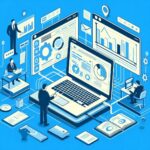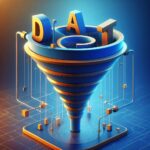
Imagine this: you’ve just launched an amazing new product. It’s innovative, it’s sleek, and you know it’s going to change the game for your users.
But as the days turn into weeks and weeks into months, you notice that growth isn’t as rapid as you hoped.
You’ve got a small team, limited resources, and you’re competing against giants. How do you ensure your product not only survives but thrives in this competitive landscape?
The answer lies in embracing Product-Led Growth (PLG). Let’s dive into what PLG is, how it differs from other growth strategies, and why it might just be the secret sauce your business needs.
1
PLG vs Other Growth Models
Product-Led Growth (PLG) is a strategy where your product is the main driver of customer acquisition, retention, and expansion.
Unlike traditional growth models where sales or marketing efforts take the lead, PLG focuses on delivering value through the product itself. This means users can experience the product’s benefits firsthand, often before committing to purchase.
Sales-Led Growth (SLG) relies heavily on a sales team to drive growth.
The process typically involves direct interactions between sales representatives and potential customers, such as cold calls, manual outreach, and presenting demos.
SLG is ideal for high-touch sales processes and complex products that require extensive customization or explanation.
Marketing-Led Growth (MLG), on the other hand, depends on marketing efforts to generate leads and drive growth.
This can include content marketing, SEO, advertising, and social media campaigns. The goal is to create awareness and interest, leading to inbound inquiries or leads that the sales team can follow up on (or that can be directly converted through the product).
While PLG, SLG, and MLG each have their strengths, the best strategy often involves some combination of strategies.
For companies with an especially strong product but limited resources, a combination of MLG and PLG often makes the most sense. Sales can be added on afterwards when needed.
I argue that sales as a function is ripe for evolution. The line between customer success and sales gets blurrier every day, especially in companies with a strong product. That’s a bit of a tangent, though. Perhaps for another day.
A hybrid approach allows you to leverage the product’s intrinsic value while supporting it with targeted marketing and strategic sales efforts. Here’s how to get started with PLG as your core strategy.
2
What Makes a Successful PLG Product
Creating a successful PLG product involves a few key elements. Whether you already have a functional product or you’re still in the design phase, these are the highest leverage elements your teams can focus on to drive greater adoption and success.
A User-Focused (Data-Driven) Experience
This is probably the most talked about and least utilized element to product success.
You’ll hear these terms bandied about in board meetings and investor presentations. Rarely, though, are day-to-day efforts focused on building these systems, analyzing what users want, and strategizing on how we can deliver it to them.
From the moment users sign up, their journey should be intuitive and seamless. And that intuitive and seamless journey should never stop. Think about it like always being at least one step ahead of your customer.
Say you have data that shows every time a customer uses x and y features, there is a .85 correlation that they’ll eventually use z too. Your product should suggest z before they even realize they need it.
Use data to understand user behavior and preferences, and tailor the experience accordingly. Every interaction should add value and encourage deeper engagement.
The key is to collect and use data wisely. Deep data infrastructure is almost always the highest ROI investment any PLG company can make.
An Easy-to-Learn Product and Extensive Knowledge Resources
Your product should be easy to learn, with minimal friction in the onboarding process.
Providing extensive resources such as tutorials, FAQs, and customer support to help users get up to speed quickly helps bypass any unintentional bottlenecks. Analytics on how many users are looking at different support articles can also provide good fodder for product improvement discussions.
Marketing and customer success should collaborate to make more information available on every common question and feature.
Most users don’t want to wait around to figure something out. They’re in the product now. Don’t make it difficult.
The easier it is for users to understand and use your product, the more likely they are to stick around.
Mechanisms for Accelerated Time to Value (TTV)
Users should quickly realize the value of your product.
Many products offer a free trial or freemium version (sometimes with a reverse free trial where the premium features disappear after the trial period).
There are dozens of strategies PLG companies have used to accelerate TTV, but the goal is always the same: get users to the highest value point and make that exceptional.
Everything from SSO to quick entry to prefilled templates can be used to get users active fast.
The faster users see value, the more likely they are to convert to paying customers.
The more “hooked” they are to your value, the more likely they are to stay customers and keep paying you month after month.
Built-in Expansion Mechanisms
Your product should have built-in mechanisms for users to expand their features and usage.
This could include tiered pricing plans, add-ons, or integrations that encourage users to upgrade as their needs grow.
Many companies enable this functionality up to a certain limit where users are then directed to “contact sales” for a custom plan.
I’ve never seen this as an effective upgrade mechanism. The user is there and ready to pay you more money, but you won’t let them.
It’s better to let them upgrade now and do outreach after if you want to discuss the benefits of other plan types or commitments.
A “Sticky” Use Case & Potential for Virality
The best PLG products are built around the identification of and focus on a “sticky” use case that keeps users coming back.
Build in stickiness.
Sometimes stickiness looks like a steep setup cost, time commitment, or learning curve where it would be difficult or expensive to switch. Other times it is the result of a more positive aspect of the product.
Whatever the case, churn can become a major problem down the road when the stickiness factor isn’t there.
Additionally, you should aim to design your product in a way that encourages sharing and word-of-mouth referrals. Viral loops, where users invite others to use the product, can significantly amplify growth.
This can be valuable even at the earliest stages. It’s not too difficult to setup and it’s likely to result in “free” acquisition.
Sometimes these mechanisms lay dormant for a long while. But once the product gets a large influx of new users, it can break out and enable virality.
3
Metrics That Matter
There are dozens of metrics you could use to gauge the success of your PLG strategy. Depending on your product type and the nature of your business, the kinds of metrics you use can vary significantly.
Here are a few key metrics to begin thinking about with any PLG product:
1. Your “North Star” Metric
This is the single most important metric. It reflects the core value your product delivers.
It’s usually an event-based action, such as the number of active users, items sold, or transactions completed. Choose a metric that aligns with your business goals and track it religiously.
2. Product-Qualified Leads (PQLs)
PQLs are users who have experienced meaningful value in your product and are more likely to convert to paying customers. Identifying and nurturing PQLs can significantly improve your conversion rates.
3. Activation Rates
Monitor the journey from traffic to signup, signup to value, and value to expansion.
High activation rates indicate that users are quickly seeing the benefits of your product and are more likely to stick around and expand their usage.
4. Customer Lifetime Value (CLTV)
CLTV measures the total revenue you can expect from a single customer over their entire relationship with your product. A higher CLTV indicates that users find sustained value in your product.
5. Retention
Retention rates are crucial for PLG. They show how well your product retains users over time. High retention rates suggest that users are finding continuous value in your product.
6. Expansion Revenue Rate
This metric tracks the additional revenue generated from existing customers through upselling, cross-selling, or increased usage. A high expansion revenue rate indicates strong growth potential from your existing user base.
4
Event-Based Analytics
I just want to talk briefly about event-based analytics. I promise it will be short.
Event-based analytics involves tracking specific user actions within your product. This data helps you understand how users interact with your product, what features they use the most, and where they encounter friction.
Ideally this is combined with identity-based tracking where both identified and anonymous users are associated to their sessions and events.
Event-based data is the lifeblood of any PLG company.
This data provides deep insights into user behavior, allowing you to:
- Identify and address pain points.
- Optimize the user experience.
- Tailor your product to meet user needs more effectively.
- Improve your overall growth strategy.
By leveraging event-based analytics, you can make data-driven decisions that enhance user engagement and drive growth.
Without event-based data and analytics, you are shooting in the dark.
5
Organizational Alignment
For a PLG strategy to thrive, it requires a concerted effort and alignment across all departments within your organization. Each team has a unique role to play in ensuring the success of the product and, by extension, the overall growth strategy.
Product teams focus on continuously improving the product based on user feedback and data insights. Their role is pivotal in a PLG strategy, as the product itself must deliver exceptional value and an outstanding user experience. Product teams use data and feedback to develop new features, enhance the user experience, and ensure that the product meets evolving customer needs.
Marketing focuses on driving awareness and attracting potential users through content marketing, SEO, and social media. This is critical because a PLG strategy relies on a steady influx of users who can experience the product firsthand. Marketing not only boosts initial user acquisition but also helps in building a brand that resonates with the target audience.
Marketing can also be a useful hub between all departments from building resource libraries and onboarding content with customer success to helping product tailor personalized experiences in-app.
Sales focuses on converting high-potential leads, particularly for larger deals or enterprise customers. While PLG minimizes the need for a large sales force, there are still scenarios where personalized interactions are invaluable. Sales teams provide demos, offer personalized onboarding assistance, and build relationships with key accounts.
Customer Success focuses on ensuring that users achieve their desired outcomes using the product. This department is integral to a PLG strategy because satisfied customers are more likely to become loyal advocates and expand their usage. Customer success teams provide onboarding support, offer training resources, and proactively address any issues users might encounter.
Operations focuses on ensuring that all these efforts are efficient, scalable, and data driven. This includes implementing and managing technologies, streamlining processes, and analyzing performance metrics to optimize campaigns. In a PLG-focused company, operations provide the infrastructure and insights needed to attract, retain, and grow users effectively.
For a PLG strategy to be effective, it requires a well-coordinated effort across marketing, sales, product, operations, and customer success teams. Each department plays a crucial role in creating a seamless and value-driven experience for the user, from the first point of contact through to long-term engagement and expansion.
6
Final Thoughts
Product-Led Growth can be a game-changer for your business.
By making your product the cornerstone of your growth efforts, you can create a compelling user experience that drives acquisition, retention, and expansion.
Remember that good data, user tracking, and event-based analytics are the lifeblood of any PLG business. Track the right metrics, leverage event-based analytics, and ensure organizational alignment to maximize your success.
With a well-orchestrated PLG strategy, your product has the potential to not just survive but thrive in a competitive marketplace.
So, start focusing on delivering exceptional value through your product, and watch your business grow.





